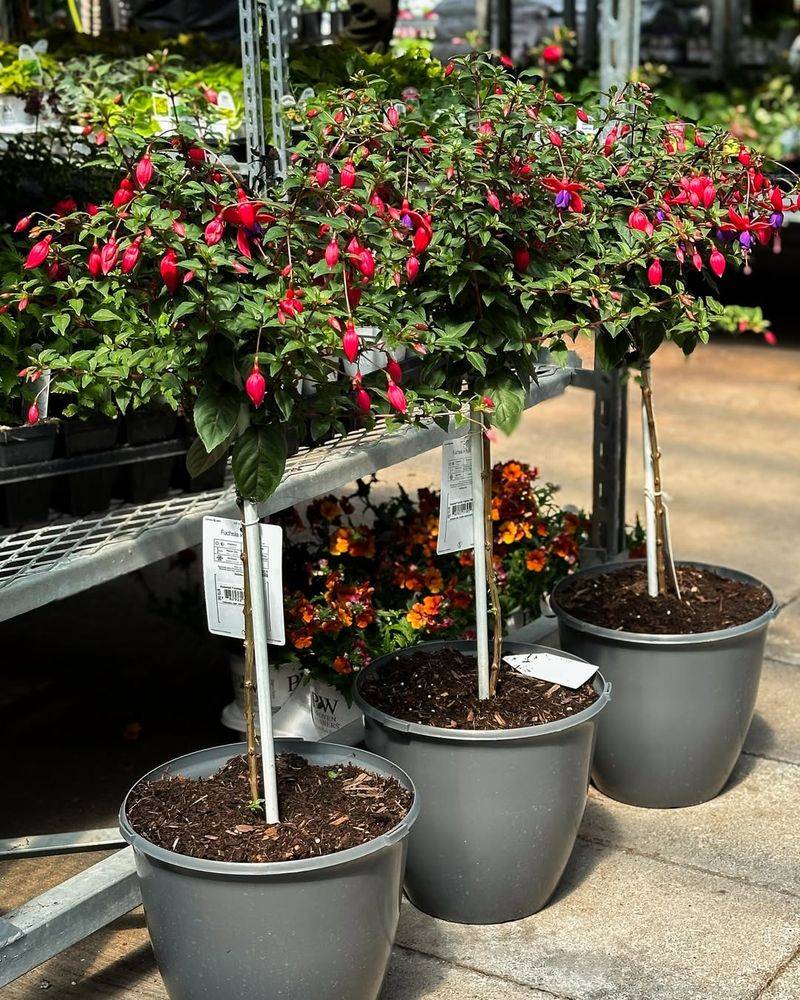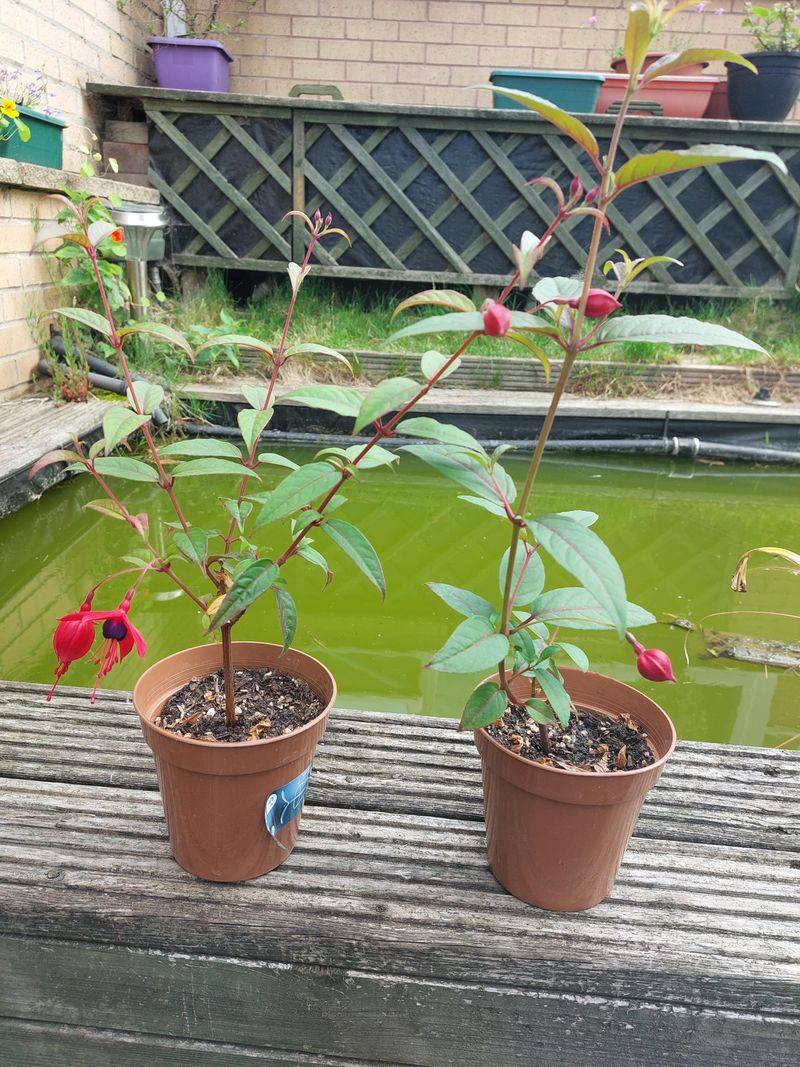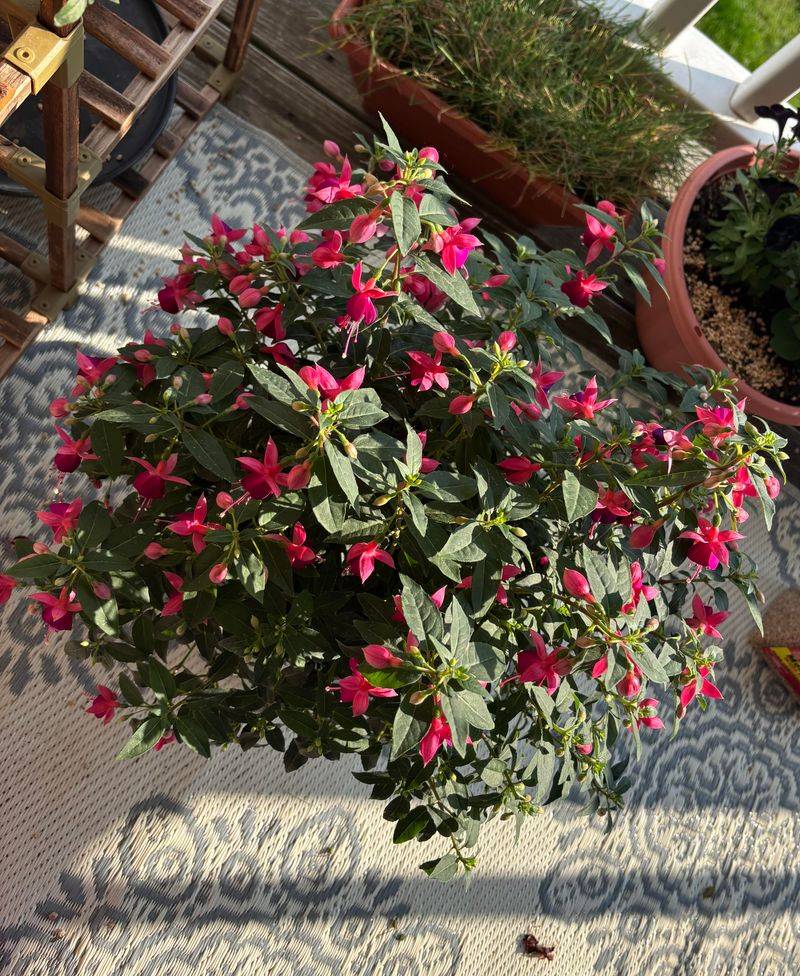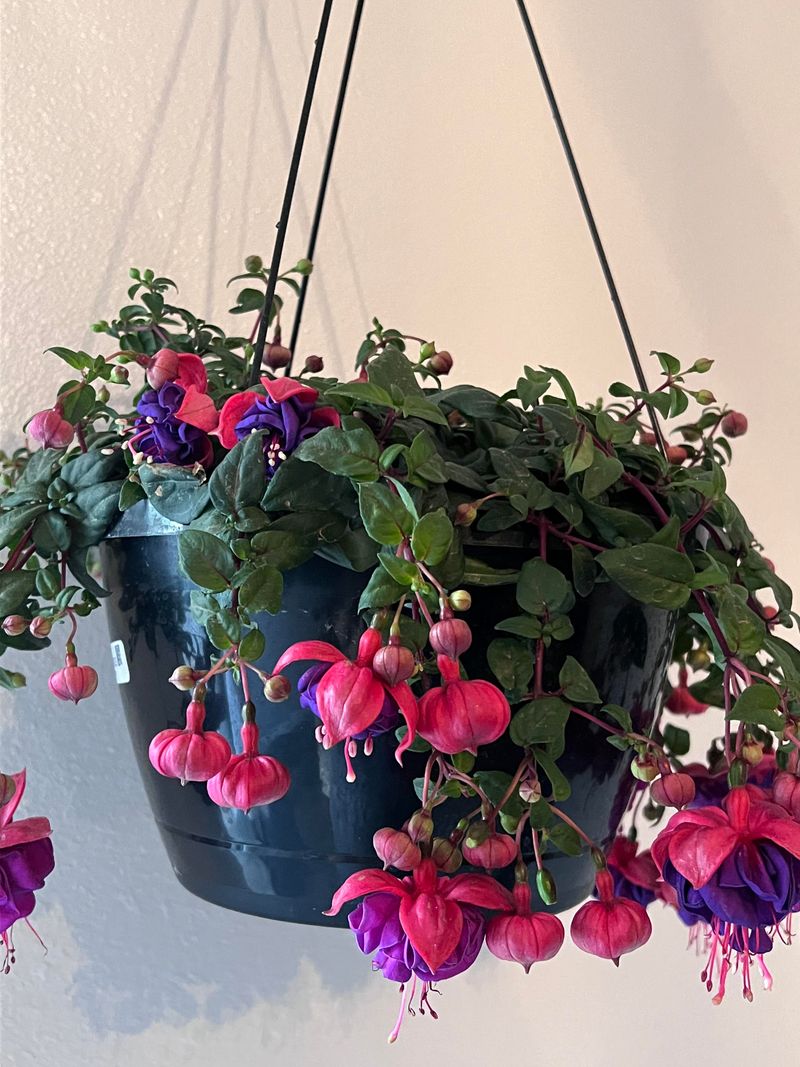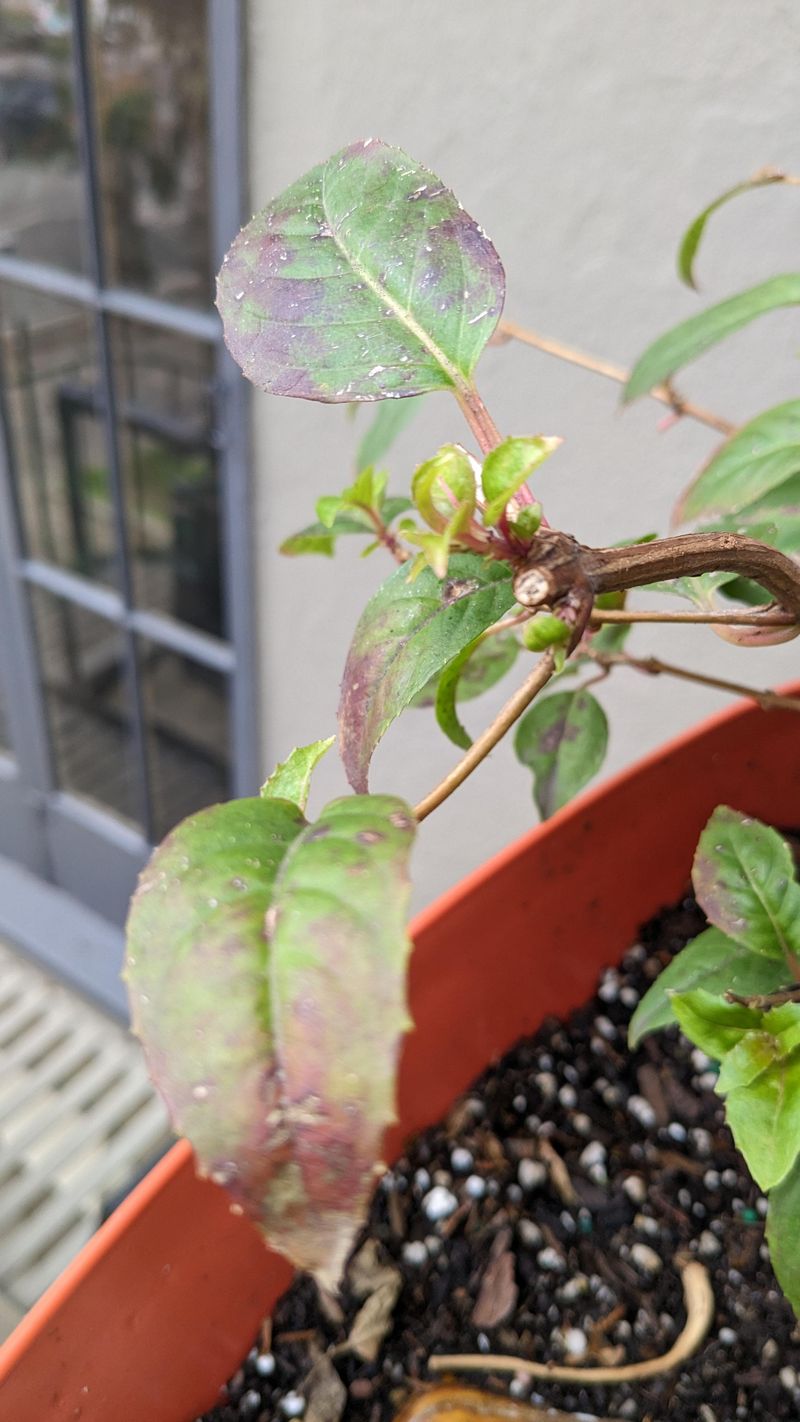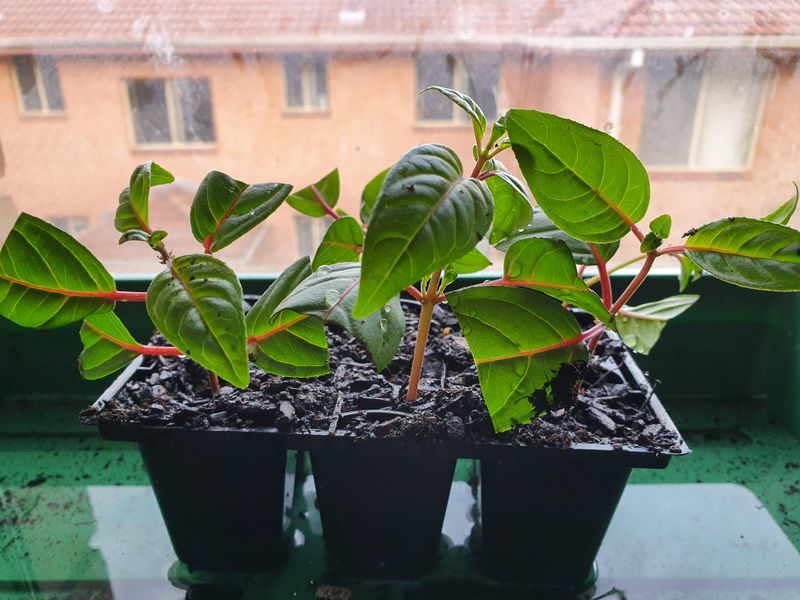Fall in California brings cooler temperatures and just the right conditions for growing beautiful fuchsias. If you’ve ever wanted to expand your collection without spending a fortune at the nursery, propagating your own plants is the way to go.
With a little patience and the right techniques, you can multiply your fuchsias and share them with friends or fill every corner of your garden with these stunning bloomers.
1. Choose Healthy Parent Plants
Strong, disease-free parent plants produce the best cuttings. Look for stems that are firm and green, showing active growth without any yellowing leaves or signs of pests.
California gardeners should select plants that have been thriving in their local climate. Avoid taking cuttings from stressed or weak plants, as these won’t root as successfully.
The healthier your parent plant, the more vigorous your new fuchsias will be once they establish themselves in your garden beds or containers.
2. Take Cuttings In Early Fall
Timing matters when propagating fuchsias. Early fall offers mild temperatures that encourage root development without the stress of summer heat.
In California, September through October provides ideal conditions. Morning is the best time to take cuttings when plants are fully hydrated and temperatures are cooler.
Use clean, sharp scissors or pruning shears to make clean cuts. Each cutting should be about three to five inches long with several sets of leaves, ensuring enough material for successful rooting and future growth.
3. Remove Lower Leaves Carefully
Once you have your cuttings, preparation is key. Strip away the lower leaves, leaving only two or three sets at the top.
This prevents rot when you place the cutting in soil or water. California’s humidity levels can vary, so removing excess foliage helps the cutting focus energy on root development rather than supporting leaves.
Handle the stems gently to avoid bruising. A clean cut at the base, just below a leaf node, gives the best chance for roots to emerge quickly and establish strong foundations.
4. Use Rooting Hormone For Success
Rooting hormone isn’t absolutely necessary, but it dramatically increases your success rate. Dip the cut end of each stem into the powder or gel before planting.
This product stimulates root growth and protects against fungal infections. Many California gardeners swear by it, especially when working with varieties that are slower to root.
You can find rooting hormone at any garden center. Just a light coating on the bottom inch of the stem is enough to boost your chances of strong, healthy root development.
5. Plant In Well-Draining Soil Mix
Fuchsias need moisture but hate soggy conditions. Create a light, airy mix using equal parts perlite, peat moss, and vermiculite.
This combination provides drainage while retaining enough moisture for new roots to thrive. In California, where fall weather can still be warm in some regions, good drainage prevents rot.
Fill small pots or cell trays with your mix, water it lightly, then insert cuttings about an inch deep. Firm the soil gently around each stem to provide support without compacting it too much.
6. Maintain Consistent Moisture Levels
Keeping the soil evenly moist is crucial during the rooting phase. Check daily and water lightly whenever the top feels dry to the touch.
California’s fall weather can be unpredictable, with warm days drying out soil quickly. Avoid overwatering, which leads to rot, but don’t let cuttings dry out completely either.
A spray bottle works well for gentle watering. Misting the leaves occasionally also helps maintain humidity around the cuttings, creating a microclimate that encourages faster root development and reduces transplant shock.
7. Provide Bright, Indirect Sunlight
Direct sun can scorch tender cuttings before they’ve developed roots. Place your pots in a location with bright, filtered light instead.
A shaded patio or under a tree works perfectly in California. East-facing spots offer gentle morning sun without harsh afternoon rays.
If growing indoors, a windowsill with a sheer curtain provides ideal conditions. The goal is to give cuttings enough light for photosynthesis without stressing them. Once roots form, you can gradually introduce more direct sunlight over several weeks.
8. Cover With Plastic For Humidity
Creating a mini greenhouse effect speeds up rooting. Cover your pots with clear plastic bags or use a propagation dome.
This traps moisture and maintains high humidity around the cuttings. In California’s drier fall air, this technique makes a noticeable difference in success rates.
Poke a few small holes for air circulation to prevent mold. Remove the cover for a few minutes each day to let fresh air in. After two to three weeks, when roots begin forming, gradually reduce covering time to acclimate plants.
9. Transplant Once Roots Develop
Patience pays off when propagating fuchsias. After three to six weeks, gently tug on a cutting to check for resistance, which indicates root growth.
You can also carefully tip a cutting out to inspect the roots. Once they’re about an inch long, it’s time to transplant into individual pots with regular potting soil.
California gardeners can then gradually acclimate these young plants to outdoor conditions. Water well after transplanting and keep them in partial shade for another week or two before moving to their permanent spots.


